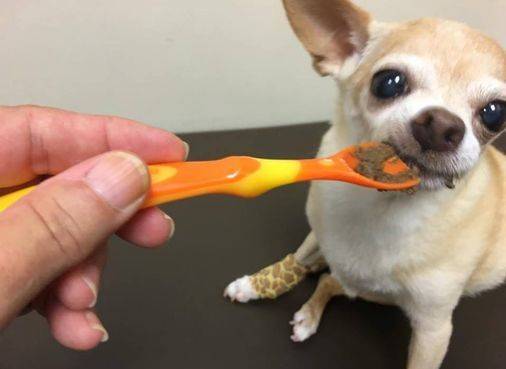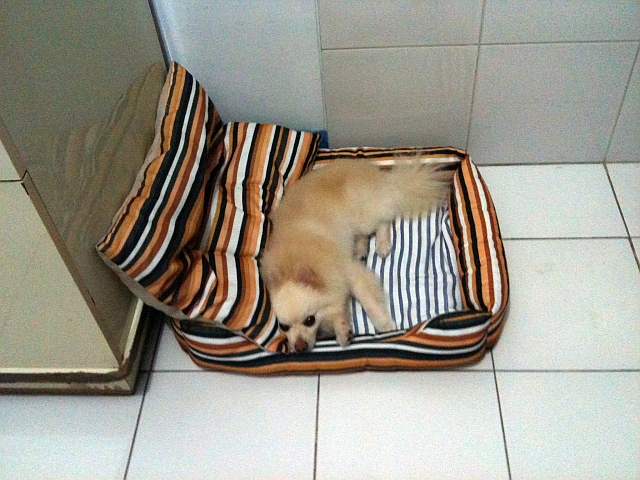Dog Food Options
Epi4Dogs disclaimer: Although Epi4Dogs suggest various commercial dog foods that appear to agree with many EPI dogs, our suggestions are not a guarantee that said product will work well with your dog’s digestive system.
We also claim no responsibility for dog food recommendations that are recalled, contaminations claims, etc. Unfortunately, this seems to be happening more frequently than ever before.
UPDATED FEBRUARY 10, 2024
There have been many changes and additions to dog food options since the below list was created .. For your convenience….. we would like to list some current foods that may also be well tolerated with our EPI dogs. However, please know that this list has dramatically changed in less than 4 weeks. Out of 9 foods we had recommended 6 are no longer available…. Many foods are now being recalled, or contamination claims are being made, and many are no longer being produced, out of stock, etc, etc….
- Farmina N&D Prime (no peas and low in fiber) https://www.chewy.com/farmina-nd-prime-chicken-pomegranate/dp/202225?utm_source=partnerize&utm_medium=affiliates&utm_campaign=1100l22691&utm_content=1101l94500&clickref=1100lwVIwV4z&utm_term=1100lwVIwV4z There are also other Farmina N&D Prime products that are low in fiber and do not have peas in them……
2. Merrick Foods (can be purchased at many brick and mortar stores) https://www.petsmart.com/dog/food/merrick-grain-free-beef-flavored-adult-dry-dog-food—30-lb-corn-free-grain-free-56058.html?cgid=100409&fmethod=Browse: Back Country Hero’s Banquet or Merrick Grain Free Texas Beef & Sw Potato, Great Plains Red, Full source Beef & Bison, etc.
Although there are some peas in these products, the peas are very low on the list.
3. Halo Elevate Grain Free red meat (no peas and low fiber) https://www.petco.com/shop/en/petcostore/product/halo-elevate-dog-grain-free-red-meat-recipe-dry-food-20-lbs-3530437?mr:device=c&mr:adType=pa&cm_mmc=PSH|BNG|CMB|SBU02|0|0|5EsJa5mG7P9Hw9jeoTxjzg|58700007650916867|PRODUCT_GROUP|0|0|pla-4582420896678765|1261140651833377|426457191&gclid=8c343428cea61e802d085098fb8b9e81&gclsrc=3p.ds&gclid=8c343428cea61e802d085098fb8b9e81&gclsrc=3p.ds&msclkid=8c343428cea61e802d085098fb8b9e81
4. Taste of the Wild used to be a good “average” dog food for many EPI dogs…. however, the ingredients have since changed (addition of multiple peas) so that we are no longer as comfortable as we used to be recommending this food ….. trying TOTW is now up to the individual EPI care-giver to try or not to try…
Some Canadian Dog food options….. and check out this Canadian online pet store for other food options:
PetMax
https://www.petmax.ca/
Performatrim Limited Ingredient Chicken and sweet potato
GO Carnivore ( https://go-solutions.com/en-ca/carnivore-grain-free-chicken-turkey-duck-adult-recipe-for-dogs )
First Mate
Nutrience sub zero “Grain-Free Prairie Red”
A Dutch resource for comparing foods for dogs…. site was very helpful to one of our EPI members.
DIET “SUGGESTED” CRITERIA for an EPI dog.
- Best option is to “start” with a no-grain food at 4% or less fiber content simply because more EPI dogs do better with no grain than those that can tolerate grain. However, some EPI dogs do just fine with food with grain in it (usually rice is the better tolerated grain). Once the dog is stable feel free to “try” a food with grain to see if your dog can or cannot tolerate grain.
- We also suggest looking at foods that have no peas or lentils in them …. or… consider food with peas that are listed no higher than as the 4th ingredient in the food.
- We also strongly suggest avoiding foods that do split pea ingredients no matter where they fall on the list. This means avoid foods that use multiple ways of including peas in their product such as listing pea, pea protein, pea flour, etc….
- We also suggest (with your vet’s approval) that it is best, if possible for you, to make your own food. For ideas on home-made diets, please go here: https://epi4dogs.com/diet-raw-home-prepared-recipes/.
BECAUSE IT IS DIFFICULT TO FIND FOODS THAT MEET OUR SUGGESTED CRITERIA….. SOMETIMES YOU HAVE TO “TRY” NOT SO IDEAL FOODS:
If you like a food that does not have any peas in it but does have a higher fiber content (maybe 5%) then to compensate for the extra fiber, either try adding more meat/protein to the diet or try using more enzymes. We have observed that 5% fiber content is usually too high…BUT… the only way to determine this with your dog is to try it and see what happens.
If you cannot find a food that you like without peas, or with peas as the 3rd ingredient instead 4rth or lower, in this case we suggest to add more enzymes to compensate for the undesirable peas..

What to feed your EPI dog……
Dry or Canned Commercial Food
Finding the right diet for an EPI dog can be very confusing .. especially for the newly diagnosed EPI dog owner (and for the dog too!) but a lot of good EPI management comes about via trial and error with each individual EPI dog.
Susan’s beloved ButterBean…..

Anderson’s beloved “BonBon”


…trying to decide if he wants fish or bison…….

….is exhausting!!!
The body is such a cohesive machine, that once one aspect is not working properly (such as a lack of nutrient absorption) that it can trigger a multitude of other dysfunctions, whether genetically or environmentally. For example, a lot of people ask about fat.
Previously… we suggested that the easiest way to address the fat content is when the dog is initially diagnosed with EPI restrict the fiber content to 4% AND restrict the fat content to 12% (temporarily)…. and then once the dog is producing good poops and has been for a few weeks…. try to slowly increase the fat content in the meal. If the poops remain normal, you most likely can feed your EPI dog normal or almost normal amounts of fat as long as the dog is receiving the enzymes.
However….. now the recommendation is ….to start with fiber restriction as stated above, but to feed normal amounts of fat that is in any dog food….If diarrhea occurs and other EPI causes have been ruled out, then try a reduced fat diet because you might be dealing with EPI + another concurrent condition that needs the fat restricted diet (Sometimes dogs with IBD cannot handle a lot of fat, or dogs with Diabetes or dogs that developed EPI from end stage Chronic Pancreatitis). If you have to restrict the fat intake….try to supplement the diet with coconut oil and/or salmon or krill oil as these are medium chain triglycerides, digested differently from long chain fats that is in animal fats and easier to digest. Bodies do need fat, but sometimes you have to be careful what type of fat is given, especially if there is also a concurrent condition. With an EPI dog, it is usually (but not always!) the fiber content that when low, the dog does better . If using commercial foods…try using foods with 4% or less fiber content.
In the end, these ratio’s are just suggestions and should be adjusted to your individual dog’s tolerance (determined by the firmness and color of their stool). After using this as a guideline, you will discover over time if your dog can tolerate higher or lower percentages of fiber and/or fat/ chicken/no chicken/peas / no peas…………. keep a journal, as it just might save your sanity!!!!
Once you understand the fat and fiber content of foods…. when first starting to manage your EPI dog…. if using commercial food, it is probably best to start with a low fiber content food located in the grain-free food section (although the term grain-free is a misnomer!) Please ALWAYS read the actual ingredients, no matter what the label claims. There are many low fiber content foods on the market now . Start with a guideline of trying foods with 4% or less of fiber content noted in the ingredients- -keep a journal, watch the results (poo). Observe the frequency, volume, texture and color or the poo. Use this as your starting point and adjust accordingly from here.
If using dry kibble or canned food, start with foods made with potato (sweet) or tapioca as they appear to work better with most, although not all, EPI dogs.
1/2 to 1 teaspoon of canned pumpkin is usually good to add to the food for EPI dogs, especially if the grain free does not seem to be working as well as you think it should… it might mean that your dog needs a little bit of the right kind of fiber and pumpkin is a good fiber to start with.
If you decide to feed raw food or home-prepared food be sure to include (1) bone or bone meal and (2) a quality dog vitamin to make sure you cover the dog’s vitamin and mineral requirements. UPCO has a porcine bone meal, purchased on-line from Amazon.com for approximately $12 for one pound of bone meal. For vitamins, VetriScience Canine Plus is decent…. however… there are many other good bone meal and quality dog vitamins. Or just ask your vet for recommendations.
Or… if/when preparing homemade meals for your dog, use a recipe that uses ingredients that provide all the necessary vitamins and minerals without having to add supplements. (please see this page for home-prepared meals: https://epi4dogs.com/diet-raw-home-prepared-recipes/)
As you are probably beginning to gather… there is no perfect diet for all EPI dogs. And yet, finding the right diet seems to be one of the 4 cornerstones of effectively managing EPI.
FYI… Automatically withholding fat because the dog has EPI, or withholding fat from any dog for that matter, without necessity may be detrimental to the dog’s overall well-being, from skin condition to properly maintaining body and brain functions. per EPI: Diagnosis & Treatment by J Enrique Domínguez-Muñoz, pub Feb 16, 2011“ “…it was demonstrated in an experimental model of pancreatic exocrine insufficiency in dogs that fat digestion and absorption was higher when enzyme supplements were taken together with a high-fat diet compared with a low-fat diet.10 As a consequence, fat restriction should no longer be considered as a rule in the management of patients with pancreatic exocrine insufficiency.“ This is why one should, after a time on the pancreatic replacement enzymes, try to determine what your dog’s fat tolerance is – – how much fat your EPI dog can actually handle.